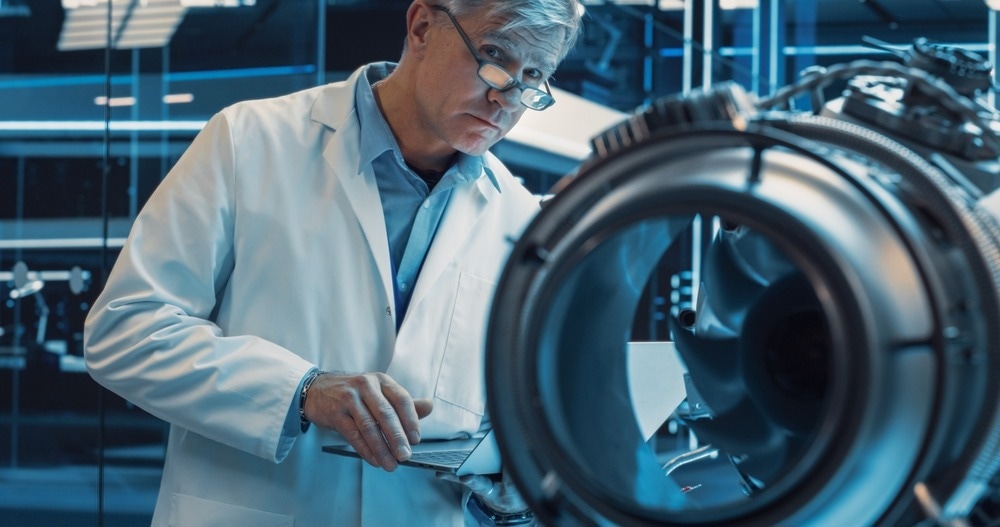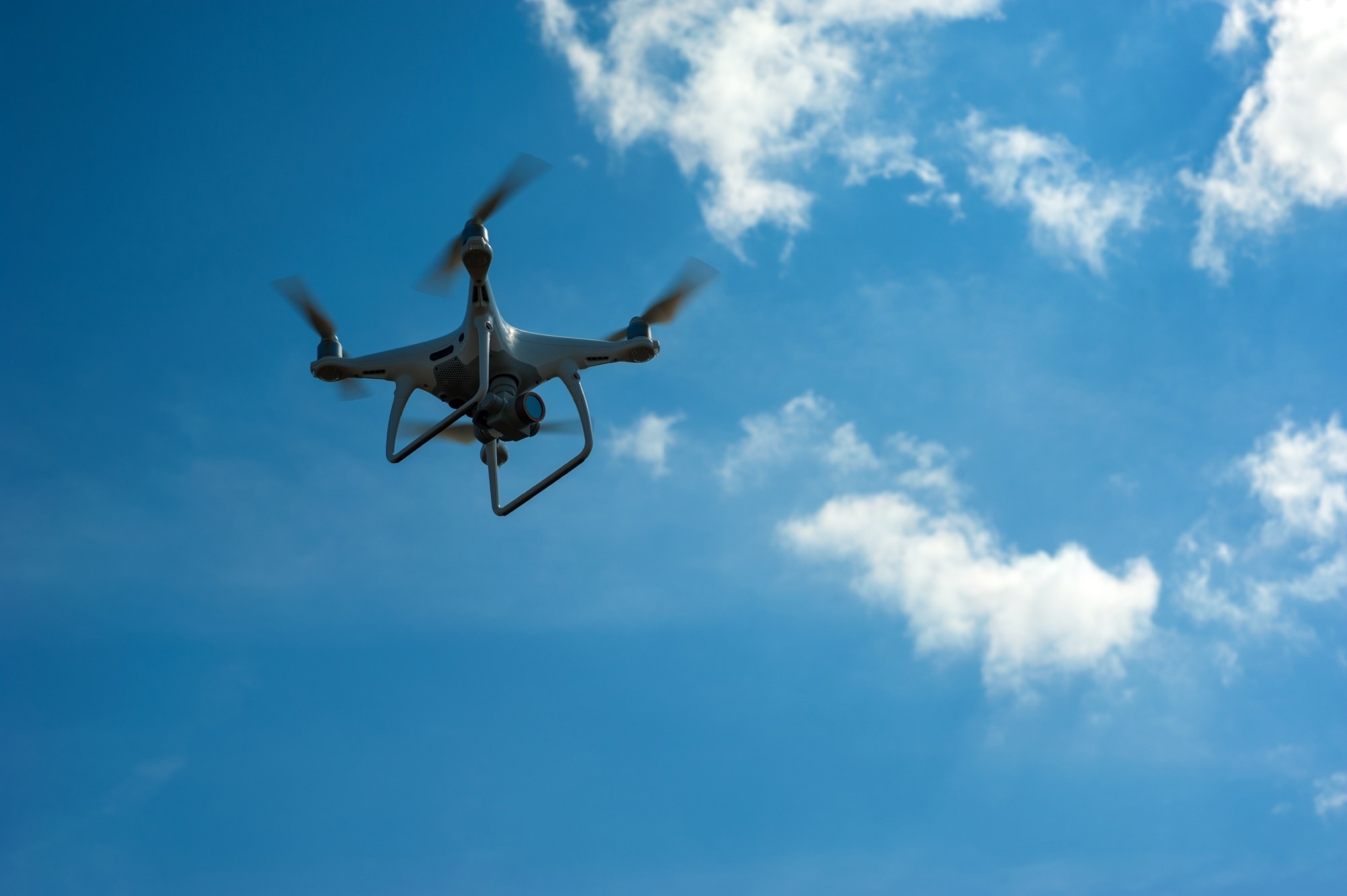The aerospace industry remains a cornerstone of the global economy, and provides a steady stream of technological developments with applications far beyond the skies. This article examines the sectors most promising trends: how will they make the future of air travel safer, more sustainable, and more efficient?

Image Credit: Gorodenkoff/Shutterstock.com
The aerospace industry remains one of the most crucial drivers of economic growth and impacts almost all sectors, ranging from transport to defense. The field is constantly involved with innovative ideas, ultramodern technology, and breakthroughs that are changing the nature of air travel, space exploration, and beyond.
Quantum Computing in Aerospace
Quantum computing, once a purely theoretical pursuit, is beginning to show practical value in aerospace. Its ability to process vast and complex datasets offers new ways to automate and optimize flight paths, as well as support intricate aircraft design. Though still in its early stages, recent applications suggest its potential is no longer pure speculation.
 Image Credit: Pavlo Baliukh/Shutterstock.com
Image Credit: Pavlo Baliukh/Shutterstock.com
One example is the QUAV framework, which applies the Quantum Approximate Optimization Algorithm (QAOA) to optimize drone trajectories in real time, even when tested on noisy quantum hardware.1
Another, Q4DR, combines quantum annealing with gate-based technology to tackle complicated routing challenges, including drone-related issues such as asymmetric costs and no-fly zones.2 These examples show how quantum methods are moving from theory to demonstrable aerospace applications.
Sustainable Aviation Fuel: Sustainability, Demand, and Applications
Sustainable Aviation Fuel (SAF) is a biofuel derived from renewable sources such as waste or biomass. With estimates of over 100,000 commercial flights per day, transitioning from non-renewable fuels is vital.
SAF has many advantages over traditional jet fuel, as it can be used in existing aircraft engines without modification and has a far lower carbon footprint. Recent analyses show that SAF pathways such as HEFA-SPK and ATJ can reduce lifecycle emissions by as much as 80 %.
But, despite its promise, SAF is economically challenged. High feedstock and production costs continue to undermine its economic competitiveness, which has led experts to call for stronger policy measures, such as tax incentives and carbon credits. 3
A range of SAF types are under development, from Jatropha- and algae-based to waste-to-fuel alternatives.
From powering aircraft and blending with traditional jet fuel to producing synthetic jet fuel, SAF is being used in several ways. The research is going on as it is one of the key ways to reduce the environmental impact of air travel and air pollutants.
Even so, supply remains a concern. A 2025 report from the Boston Consulting Group warns that global SAF supply could fall 30-45 % short of 2030 targets unless investment and policy support accelerate. Recent reviews from this year underscore SAF's importance as a scalable, drop-in solution for the industry, but stress that time is running out.4,5
Download your PDF now!
Hydrogen Fuel in the Aerospace Industry
Hydrogen is considered a zero-emission alternative to conventional jet fuel, but its practical role in aviation is becoming clearer as studies refine expectations.
One of the problems that the industry faces with hydrogen fuel is its cost. The cost of hydrogen production is far more than that of traditional jet fuel, but research indicates that the cost could be reduced as the technology develops.
Hydrogen fuel is an attractive alternative in large part due to its potential to improve air quality, lower carbon emissions, and enable more sustainable production processes.
A recently published scenario modeling study in Clean Energy and Sustainability suggests hydrogen-powered aircraft could reduce fuel mass by 28 % and CO2 emissions could be nearly halved by using green hydrogen, provided hydrogen hubs are developed at major airports. 6
However, researchers also warn that hydrogen aircraft could generate 18-20 % more persistent contrails than conventional aircraft, though water-emission strategies (WET-50 and WET-75) may mitigate up to 99 % of this effect. 7
Learn how aerospace industries are using 3D printing, here!
Artificial Intelligence in Aerospace
The pursuit for safer skies continues to push the aerospace industry toward ever-higher standards of precision, and advanced manufacturing techniques are proving central to that effort.
AI is now being applied across a range of aerospace tech, from aircraft design to maintenance and space exploration. A 2025 study outlined a real-time defect prediction framework for composite manufacturing, using machine learning models on edge devices linked with industrial IoT sensors.
These sensors monitored variables such as pressure, temperature, vacuum, and resin flow during resin transfer molding to detect defects as they were made, facilitating immediate corrections.
The LSTM model delivered the strongest results, with ~95 % accuracy and an F1-score of ~0.94. Explainable AI tools like SHAP were used to identify key process variables behind the predictions. This shift from post-process inspection to proactive quality control could dramatically reduce waste, rework, and downtime in aerospace composite fabrication. 8
A Rapidly Evolving Field
Each of these technologies offers aerospace a leg-up in the quest for safe, clean skies. From quantum computing to hydrogen propulsion, all have distinct technical and economic challenges, but their active investigation signals a collective shift towards sustainability, one that should be encouraged.
Mach 5 Aviation: Meet The Next Billion-Dollar Startup Racing To The Future
Video Credit: Forbes/Youtube.com
This article was reviewed on September 10th 2025.
References and Further Reading
- Innan, N., Kashif, M., Marchisio, A., Gan, Y. S., Barbaresco, F., & Shafique, M. (2025). QUAV: Quantum-Assisted Path Planning and Optimization for UAV Navigation with Obstacle Avoidance. arXiv preprint. https://doi.org/10.48550/arXiv.2508.21361
- Osaba, E., Miranda-Rodriguez, P., Oikonomakis, A., Petric, M., Ruiz, A., Bock, S., & Kourtis, M. A. (2025). Solving drone routing problems with quantum computing: A hybrid approach combining quantum annealing and gate-based paradigms. arXiv. https://doi.org/10.48550/arXiv.2501.18432
- Ambrosio, W. B., de Sousa, B. A., Kanieski, J. M., Marchiorie, P., & Mockaitis, G. (2025). Sustainable Aviation Fuels: Opportunities, Alternatives and Challenges for Decarbonizing the Aviation Industry and Foster the Renewable Chemicals. arXiv. https://doi.org/10.48550/arXiv.2504.03880
- Marleen Kaesebier (2025) Green jet fuel production could miss 2030 targets, BCG report says. Reuters. https://www.reuters.com/sustainability/climate-energy/green-jet-fuel-production-could-miss-2030-targets-bcg-report-says-2025-03-27/
- Klimczyk, W., Jasinski, R., Niklas, J., Siedlecki, M., & Ziólkowski, A. (2025). Sustainable Aviation Fuels: A Comprehensive Review of Production Pathways, Environmental Impacts, Lifecycle Assessment, and Certification Frameworks. Energies. https://doi.org/10.3390/en18143705
- Alothaim, T. A., Alrubayan, B. M., Pontika, E., & Pilidis, P. (2025). Transition to Hydrogen Aviation: A 2030–2050 Scenario Performance Analysis for an Airline. Clean Energy and Sustainability. https://doi.org/10.70322/ces.2025.10011
- Megill, L., & Grewe, V. (2025). Investigating the limiting aircraft-design-dependent and environmental factors of persistent contrail formation. Atmospheric Chemistry and Physics. https://doi.org/10.5194/acp-25-4131-2025
- Sunny, S. R. (2025). AI-Driven Defect Prediction for Aerospace Composites Using Industry 4.0 Technologies. Zenodo Preprint. http://dx.doi.org/10.5281/zenodo.16044460
Disclaimer: The views expressed here are those of the author expressed in their private capacity and do not necessarily represent the views of AZoM.com Limited T/A AZoNetwork the owner and operator of this website. This disclaimer forms part of the Terms and conditions of use of this website.